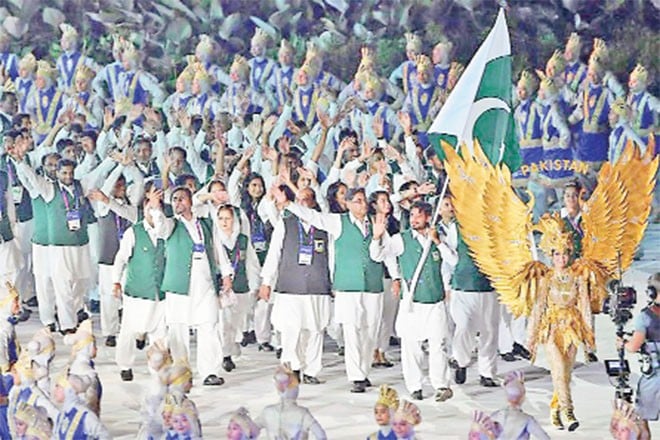
The key to producing Pakistani teams and individual players who stand on the medal podium at regional and international events lies in developing a dynamic school sports programme followed by a continuation to club and then district level

In the aftermath of any large-scale sporting event, there is always the fallout. The Asian Games and Pakistan’s tally of four bronze medals for a nation of 220 million people inevitably brought criticism. Sadly, much of it was directed at the athletes rather than at the sporting structures which have so badly let our country down in the sporting arena, placing us on successive medals tables far behind nations with much smaller populations.
The incoming PTI government has promised a brand new sports policy and the Punjab Education Minister has emphasized physical activity will be introduced at schools across the province. We hope this can happen and will act as a new beginning. The remarks of Dutch hockey coach Roelant Oltmans, who resigned a few days ago after being appointed for two years earlier this year to coach the Pakistan hockey team, are telling. Oltmans, who has led both the Dutch male and female teams to success at the highest level, commented on the environment in which hockey was being played and the inability of the PHF to correct this at the present moment.
This is a difficulty faced by almost all sporting federations, even those who truly wish to serve their sport. Of course, too many others are riddled by corruption, nepotism and other malpractices. But even if a federation seeks change, it is hard to achieve. The number of young men and women available to choose from is extremely limited with sport having been almost eliminated at the grassroots level. There are few clubs, few operational teams at tehsil level and little encouragement in most schools for sport. The exception of course is cricket, which has now been converted into a giant enterprise and at which Pakistan continues to enjoy success. With a better overall sporting structure, it could achieve even more.
The key to producing Pakistani teams and individual players who stand on the medal podium at regional and international events lies in developing a dynamic school sports programme followed by a continuation to club and then district level. To its credit, the PTI government appears to have this in mind. Right now, the physical fitness of children itself should be a national concern. Pakistan carries the highest burden of diabetes in the region, with one in every four Pakistanis suffering the potentially life-threatening ailment. Cardiovascular disease is also widespread. As the AKUH and other institutes have pointed out in the limited studies conducted, obesity is growing among school-age children in cities and also entire regions such as Hazara. We can also see that children are less fit than before. This is especially true of the elite, towed to their school gates or other places of visitation in cars, and of girls, who get few opportunities to play even in those grounds which still exist.
So, how do we work to amend this? First of all, we understand that achievement at the highest levels is a step higher up the ladder. We need to begin climbing the ladder from the bottom. This also means giving children the opportunity to gain a healthy start in life and develop habits that will help them as adults by being fit and acquiring an active lifestyle. The excellent Daily Mile programme initiated in the UK, under which children from every class, supervised by whichever teacher is taking the lesson, come out at separate 15 minute intervals and run or jog for that short period, suggests that even small starts lay the ground for bigger happenings. Teachers, who decided independently at what time the children should go out for their daily jog or run, say they return to the classroom more able to focus on academic work and find a sense of achievement as they develop the fitness level required to move from walking for some of the 15 minutes to running throughout it.
So we begin with our schools. But perhaps given the culture of accepting nothing short of winning ingrained into our society, we also need more. As the grassroots sports structure is developed, centres of excellence combined with an independently conducted expert talent hunt in various sports may enable us to pick children, teenagers and young people especially adept at particular sports. Setting up an academy for coaches and acquiring the assistance of coaches from overseas to bring their skills up to par would work in combination with this to help these young people reach their true potential. We need then to think of both the long and short run. Sports is essential not only to health and fitness but also to national unity and the patriotism we talk about so often. It unites people more effectively than almost anything else. For this reason, we need to find ways to develop the obvious talent of our people at every level, aiming initially to correct a non-existent structure but also working towards shorter term ends.
kamilahyat@gmail.com